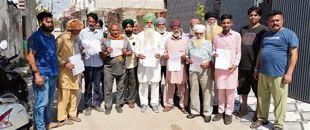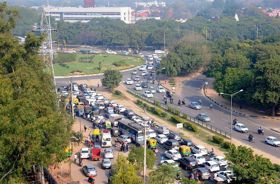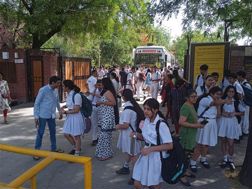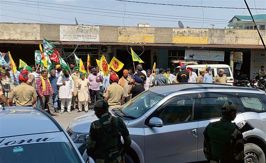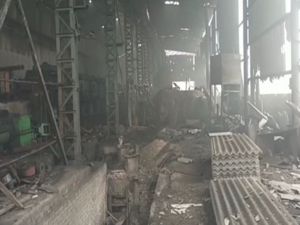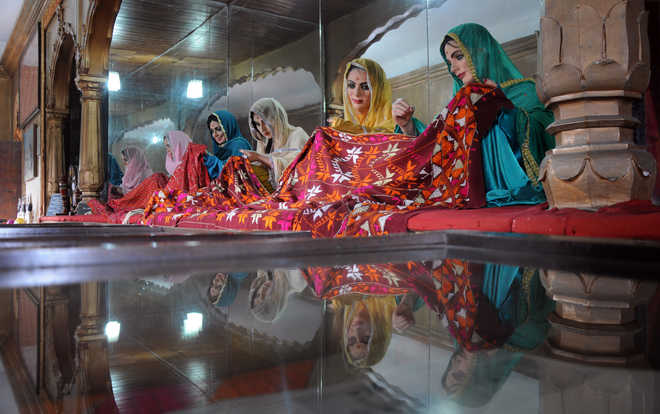
Crafty touch: Mannequins showcasing the craft of phulkari.
Harshraj Singh
OLD coins, seals, pottery, utensils, costumes, phulkaris, ornaments, agricultural tools and several other items related to folk art at the Museum of Rural Life of Punjab, Punjab Agricultural University, Ludhiana, create a lively picture of the era gone by. The museum preserves the cultural heritage of Punjab but still many people are unaware of this place. The pottery pieces of various periods — Harappan, Aryan, Gupta and Medieval (1700 BC to 200 BC) — are on display at the museum. The utensils including lota, garwa, ganga sagar, waltoha, thali, parat, kaul, tawi, kundi and other kitchenware attract visitors from all over the state. Besides, an open-air kitchen in the courtyard presents a beautiful picture Punjab’s rural life.
Musical instruments like sarangi, tumba, been, vanjhli, dholki, nagara and other items show music has always been an integral part of the state’s rural life. Colourful phulkaris, khes, durries and other woven items are showcased at the museum. Besides, a tindan wala khoo (an old well) has been set up on the premises.
With a view to creating awareness about Punjab’s rural life, the foundation stone of the museum was laid on March 1, 1971, by the then PAU VC Dr MS Randhawa. It was inaugurated by prominent writer Khushwant Singh in 1974. The museum does attract visitors but the footfall is far from what it ideally should be. Rajwinder Singh, a Non-Resident Indian, says, “There is a dire need to promote museums depicting our rich heritage. Many people are unaware of this museum. Majority of the items displayed here are missing in contemporary villages.”
Punjabi Lok Virasat Academy chairman Professor Gurbhajan Singh Gill feels the state government should try and promote it as a tourism spot. “The museum presents the real rural life of Punjab. There is a need to organise annual activities and competitions of making khes and durries to promote the museum, said Gurbhajan. “If such activities are organised, more people would learn about the museum. Besides, there should be no ban on photography inside the museum. If people share photos and videos of the museum on social media, more people are likely to visit”, he said.
Around four months back, PAU had announced it would charge fee for pre-wedding shoots outside the museum. The fee for the employees of the PAU and Guru Angad Dev Veterinary and Animal Sciences University was set at Rs 5,000 per day, while for outsiders it was set at Rs 25,000 per day.
The visiting time is 9am to 5pm and entry fee is Rs 10 per person and Rs 5 per schoolchildren.





















